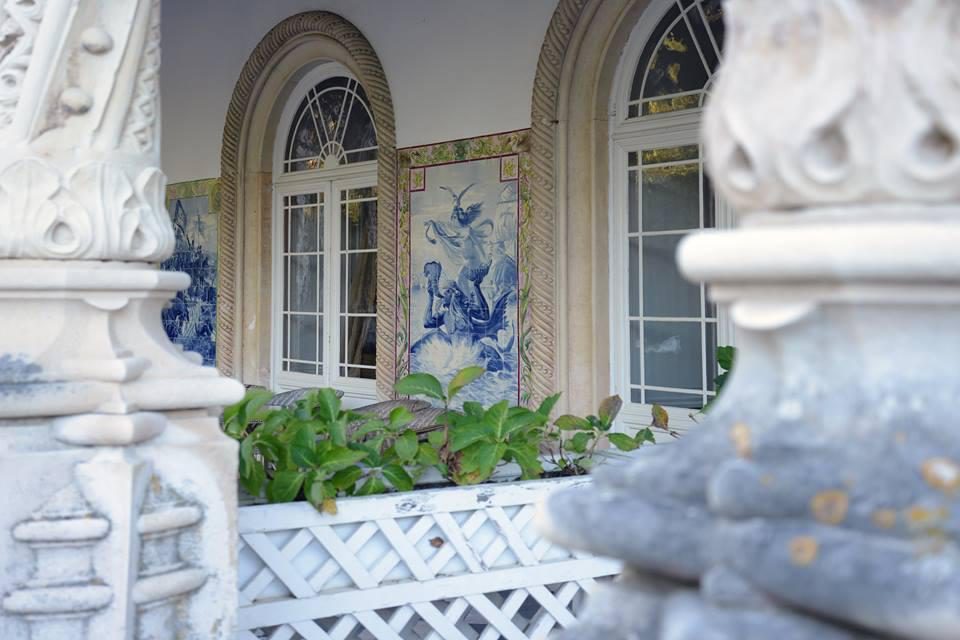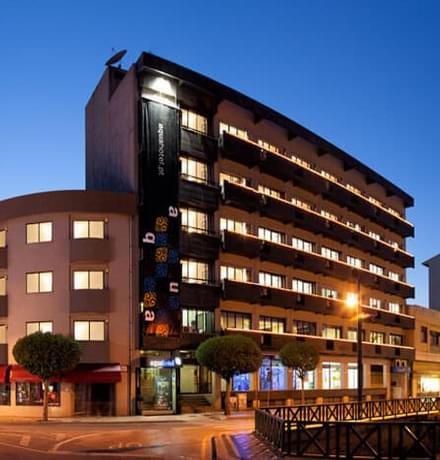At the far end of Bussaco Mountain, where the highest range is 547 meters high, you’ll find Bussaco Woods, surrounded by a high wall with eleven entrance doors. Make them your starting point for a stroll through Nature in the region and fall in love with the serene exuberance, almost magical, of Bussaco's intense green colour.
After you track all paths in the mountain, take a rest at Bussaco Palace Hotel, one of the most beautiful neo-Manueline buildings in Portugal, or visit the Santa Cruz Convent, where General Wellington spent the night during the Battle of Bussaco. Indulge yourself in the charm of the flora and History of this place.
Flora at Bussaco Woods
Bussaco Woods are very small when compared with other large European woods. However, the variety of its plant species is larger than in other wood. Within the walls built by the Carmelites, there are about 400 native species of the Portuguese Atlantic coast and around 300 which come from other climates. The most representative element of this symbiosis is the Bussaco cedar, an important cypress which comes from Mexico and might have been the first exotic species to be planted in the forest by the monks in 1656. The Saint Joseph Cedar, planted 350 years ago by the monks next to the door with the same name, is the local symbol of this majestic species of trees.
The camellias of Bussaco Woods
Camellias have always been fascinating ornamental items for centuries. But it was in the 19th century that this fascination reached its peak, especially in the North of the country, in Sintra and in the magical Buçaco National Woods, where the weather conditions were very favourable for the development of this seducing flower. Camellias were very popular among aristocratic collectors.
Buçaco National Woods owns an amazing collection of 180 Camellia (Camellia japonica) specimens. This collection dates back to 1884 and it was a gift of Alfredo Allen, Viscount of Quinta Villar d’Allen. The Buçaco Camellias can be spotted across the whole Woods, but especially next to the gardens of The Bussaco Palace and around the Fountain of S. Silvestre and the big lake of Buçaco Woods.
These romantic flowers blossom between February and May. Back in the 19th century as in the present day, Camellias cast a spell on everyone! A great leitmotif for discovering the botanical richness of Buçaco National Woods.
A stroll through the woods
If there is a fresh and quiet place to take a stroll, you will find it at Bussaco Woods. With six properly identified pedestrian paths, the wood invites you to discover its mesmerizing botany. Walk to Vale dos Fetos and indulge yourself with its lakes, refresh yourself in one of the many fountains spread around the fence and admire the natural corners designed by luxuriant vegetation. You can also explore the woods through the historical routes: admire the magnificent fence doors or the churches built by the Barefoot Carmelites which blend perfectly with the trees. Follow the Steps of the Passion of the Christ, climb the Cruz Alta Overlook and, at last, go to Almas de Encarnadouro to visit the Military Museum.
Buçaco Battle
During the Third French Invasion, Bussaco proved to be a decisive place in the unfolding events. On 27 September 1810, English and Portuguese troops led by General Wellesley united in the Battle of Bussaco to fight the French troops led by Massena. Enjoying the defensive characteristics of the field and with 50.000 men on his side, Wellesley stropped the Napoleonic offensive which was on its way to Lisbon. This a hard blow to the Napoleonic forces, but Portuguese and English troops were boosted and encouraged. This confrontation was essential to future military events which determined the final expulsion of the French troops. Bussaco still keeps the aura of glory and courage of Portugal, a country that resisted the invaders.
The Bussaco Palace
Located directly north of Coimbra, the Bussaco Palace is idyllically perched high on a hill in the heart of the Bussaco Woods, a 250 acres of lush forest planted by the Barefoot Carmelites in the 17th century and one of the most spectacular Portuguese landscapes. Resplendent in its overwhelming Manueline-gothic architecture, this legendary castle was built between 1888 and 1912 for the last Kings of Portugal and converted into a deluxe hotel in 1917.
The current hotel building, in neo-manueline style, is decorated with tile panels, frescoes and paintings alluding to the Portuguese Discoveries, all signed by some of the great masters of the arts.
Inside, there are remarkable works of art by great Portuguese masters of the time, from the collection of tile panels by master Jorge Colaço, evoking The Lusiads, Gil Vicente's plays and the Peninsular War, graceful sculptures by António Gonçalves and Costa Mota, canvasses by João Vaz illustrating verses from the maritime epic by Luís Vaz de Camões, frescoes by António Ramalho and paintings by Carlos Reis.
A true fairy tale palace at the heart of an enchanted forest !




















